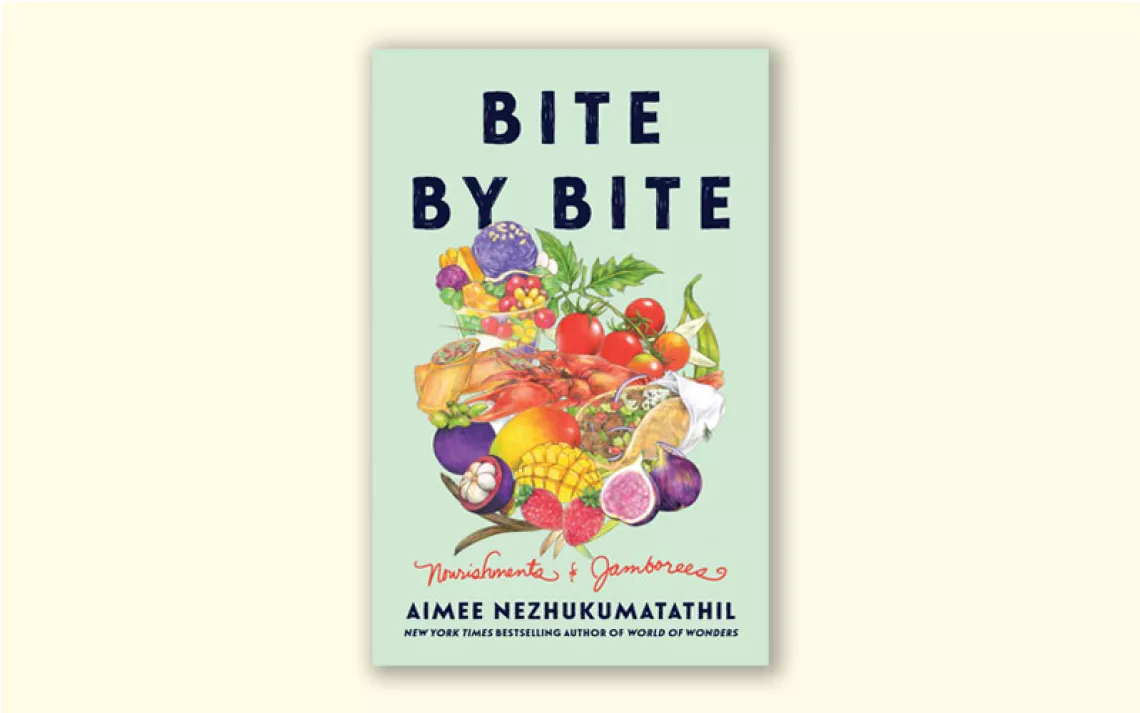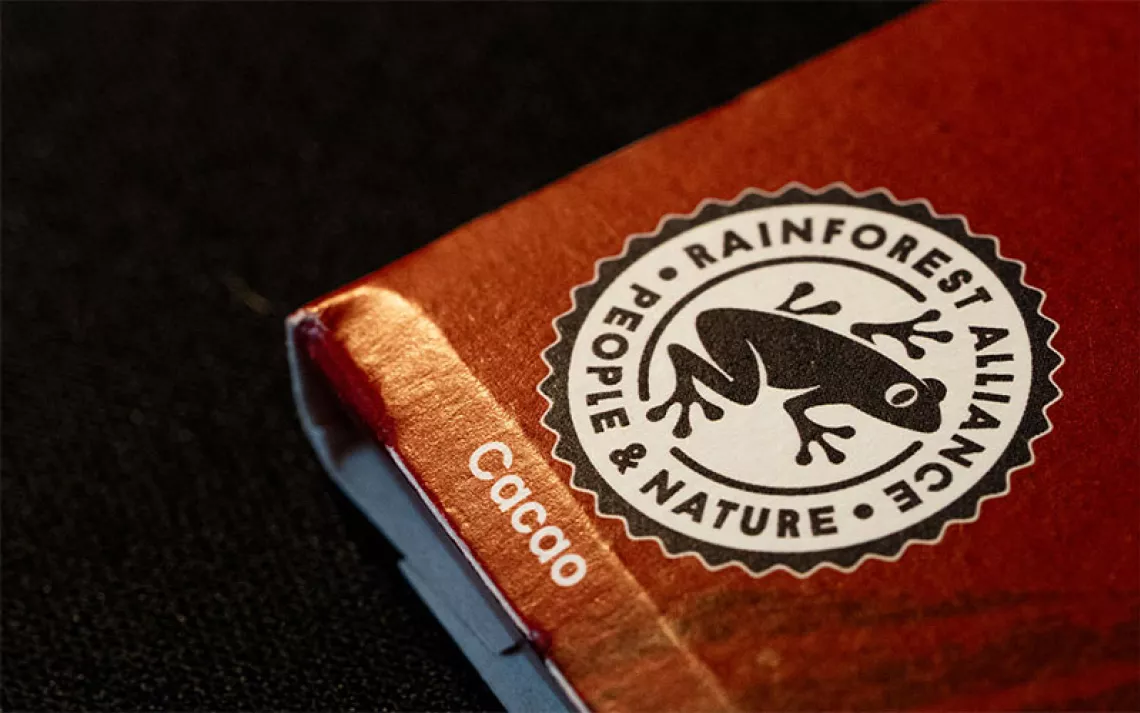Eating the Whole Farm

Welcome to dinner. Your menu this evening was designed by a legend in the food-loving world: Soil. Each dish features ingredients selected by soil to support its cycle of fertility, from legumes, that spread much-needed nitrogen, to pest-deterring mustard greens.
Is this the future of dining?
It should be, argues Dan Barber in his new book The Third Plate (May 2014, The Penguin Press). The executive chef and co-owner of Blue Hill, a restaurant and working farm in Pocantico Hills, New York, thinks it’s time to reverse engineer the way we plan our meals. Instead of demanding that the earth cough up the items on our grocery lists, we should follow the example of our ancestors, start eating the produce that the earth wants to give. Food is more than individual ingredients—it's a web of interconnected systems.
Cover crops are a cornerstone in maintaining a healthy ecosystem on the farm. They control weeds, keep topsoil in place, house insects and birds, and sustain high levels of organic matter in the soil. Putting cover crops on our menus and in our cookbooks would support the cultivation of these plants, but unfortunately, most cover crops don’t taste any better than the dirt they nourish.
Left to its own devices, soil can take care of itself. Soil nutrients nourish plants, which then die and are eaten up by microorganisms, returning the nutrients to the soil and completing the circle. But conventional agriculture breaks the circle, removing plants and their nutrients from the soil and feeding seedlings synthetic fertilizers that provide only select chemicals, without addressing the complexities of soil’s interdependent cycle. Malnourished soil produces weaker plants, attractive prey to pests, so synthetic pesticides must be dumped into the mix as well. We profit and the soil loses.

Farmers like Thaddeus Barsotti of Capay Organic opt for long-term soil fertility over short-term exploitation. “Someone once told me that good farmers feed the soil and let the soil feed the crops,” he wrote in the farm’s May newsletter. “As soon as you are feeding crops directly, you have a problem.” Even organic fertilizers are not a sustainable solution. On a recent afternoon he explained to Sierra the downfalls of pelleted chicken feather (“lots of salt”) and green waste compost from restaurant scraps (“lots of trash”). “In the long run you make more money by keeping soil healthy,” he said. “Inevitably the imbalances of those organic fertilizers show up.”
Capay invests in long term soil health by budgeting one cover crop per consumable crop. Capay’s summertime cover crop combination of Iron & Clay Peas with Buckwheat thrives in the heat of the dry Sacramento Valley, suggesting another advantage of cover crops: adaptability to a changing climate.
Despite the long-term rewards of nurturing soil health, many farmers can’t afford to commit to growing crops that will end up disked into the soil instead of placed in a shopping cart. “That’s where chefs and eaters come in,” Barber told Sierra. “We need to figure out how to cook with [cover crops], how do you make something not only edible, but also delicious. That’s how you create the incentive for the farmers to not only grow them but also harvest them.”

This summer, Capay’s pea shoots won’t leave the fields. Shoots and leaves are difficult to harvest, explained Barsotti, and the demand just isn’t there. “That would be amazing if [pea shoots] became really popular. Arguably that’s the most sustainable food ever. It does all the right things for the soil.”
Pea shoots are only the beginning. “It’s not just about eating cover,” Barber explained, “You gotta eat the whole thing.” To provide maximum benefits to the soil, many cover crops, including buckwheat, need to be plowed under before they go to seed. But the buckwheat products found on supermarket shelves are all made from the seeds of the plant. Harvested in this edible form, buckwheat is what Barber calls a “soil fertility” crop. Such crops still provide more soil benefits than high cash value crops like wheat and corn, and bring farmers a more reliable economic return than cover crops.
Clover, a classic cover, is a nitrogen-fixing superhero, but as a food it’s better suited for cows than cooks. Kidney beans are more modest nitrogen-fixers, but they add a protein-packed punch to chilis, salads, and even brownies. Brassicas (a family that includes kale, collards, brussels sprouts, and broccoli) are soil biofumigants, producing compounds that deter bacteria, fungi, insects, and weeds. “They’re like fungicides,” explains Barber. An easy way to revamp your favorite dishes for the sake of soil fertility and flavor is with buckwheat, barley, and millet. “Those grains are better than white rice,” said Barber. “They have more flavor but you cook them the same way. They’re cheaper and they’re delicious.”
I was curious to try foods that feed the soil as well as my body. Tired of basil, I re-energized my pesto with the lively, green piquancy of pea shoots. I enjoyed the succulent chew barley brought to risotto, complementing the silkiness of the broth. Buckwheat gave my crepes a satisfying, earthy texture, without weighing down the feathery pancakes. Below is a three-course, plant-based meal featuring several readily available soil-fertility crops. I invite you to grab your fork and find your place in our food web.

Barley Risotto with Brassicas and Pea Shoots
Serves 3 to 4 ($1.70 per serving)
Adapted from Deb Perelman/Smitten Kitchen
Ingredients
- 5 cups low sodium vegetable stock
- 2 tablespoons extra virgin olive oil
- 1 medium onion, diced
- 1/4 teaspoon thyme
- 1 cup hulled or pearled barley
- 1/2 cup white wine (optional)
- 3 cups chopped brassica greens (mustard greens, kale, cabbage, collards, bok choy)
- 2 tablespoons unsalted butter or vegan buttery spread, softened
- Salt and pepper
- Pea shoots for garnish
Bring the stock to a simmer in a saucepan, then lower the heat, keeping the stock warm.
Heat the oil in a deep skillet over medium heat. Cook the onion and thyme until the onion is softened, about 6 minutes. Stir occasionally to prevent burning.
Stir in the barley, cooking for 2 minutes. If adding wine, stir it in until nearly absorbed.
Pour in 1 cup of warm stock and cook, stirring frequently, until nearly absorbed. Add stock 1/2 cup at a time, stirring until liquid is nearly absorbed before adding another scoop. Your risotto is done when the barley is al dente and coated in a thick, silky sauce, about 35 minutes for pearled barley, longer for hulled. You may not need all the stock. For a “soupier” risotto add another half to one cup of stock, stirring until the risotto reaches the desired consistency.
Stir in the greens and let them wilt, cooking for an additional minute. Stir in the butter and add salt and pepper to taste.
Garnish each bowl with a few sprigs of pea shoots.
Kidney-Millet Cakes with Pea Shoot Pesto
12-16 cakes, serves 4-5 ($1.80 per serving with pesto)
Cakes Adapted from Beth Versical/Delectably Free
Ingredients for cakes
- 3/4 cup uncooked dry millet
- 1 1/2 cups cooked kidney beans
- 1 tablespoon chia seeds
- 1 tablespoon water
- 1 tablespoon oil, plus more for cooking cakes
- 1 medium red bell pepper, diced
- 1 scallion, finely chopped
- 1 clove garlic, minced
- 3/4 teaspoon sea salt
- 1/2 teaspoon ground cumin
- 1/4 teaspoon ground coriander
Ingredients for pesto
- 2 cups pea shoots
- ? cup walnuts
- ¼ cup olive oil, more to taste
- ¼ cup nutritional yeast, or grated parmesan cheese for non-vegan pesto
- 1 ½ teaspoons lemon juice
- 1 clove garlic (optional)
- Salt
Cook the millet with 1 1/2 cups of water in a saucepan over medium heat. Watch carefully after about 10 minutes of boiling to prevent burning. Remove from heat as soon as the the water is absorbed.
Meanwhile, heat 1 tablespoon of oil in a skillet. Cook red pepper and scallion over medium heat for about 4 minutes. Stir in the minced garlic and cook for another minute before removing from heat.
Combine 1 1/2 cups of cooked millet, beans, chia, spices, salt and water in a bowl. Mash the mixture with the back of a spoon until everything holds together. Stir in the red peppers, scallion and garlic.
Heat an additional teaspoon of oil in the unwashed skillet used to cook the red pepper. Measure out mounds of millet mixture slightly larger than golf balls and roll in your hands before pressing into patties.
Cook the patties in the hot oil over medium-high heat until crispy and lightly browned, about 3 minutes per side.
To prepare the pesto, place all ingredients in a food processor and blend until nearly smooth. Salt to taste. Serve millet cakes with a dollop of pesto.
Buckwheat Crepes
6-8 crepes ($0.60 per serving of 2-3 crepes)
Adapted from Katy MacKinnon/Katy’s Kitchen
Ingredients
- 1 flax egg (1 tablespoon ground flax + 3 tablespoons water)*
- ¾ cup buckwheat flour
- ¼ cup brown rice or all-purpose flour
- ¼ tsp cinnamon
- 1 and ½ cups milk of choice
*A chicken egg can likely be substituted for non-vegan crepes
Please visit Katy’s Kitchen for the full recipe.
 The Magazine of The Sierra Club
The Magazine of The Sierra Club



